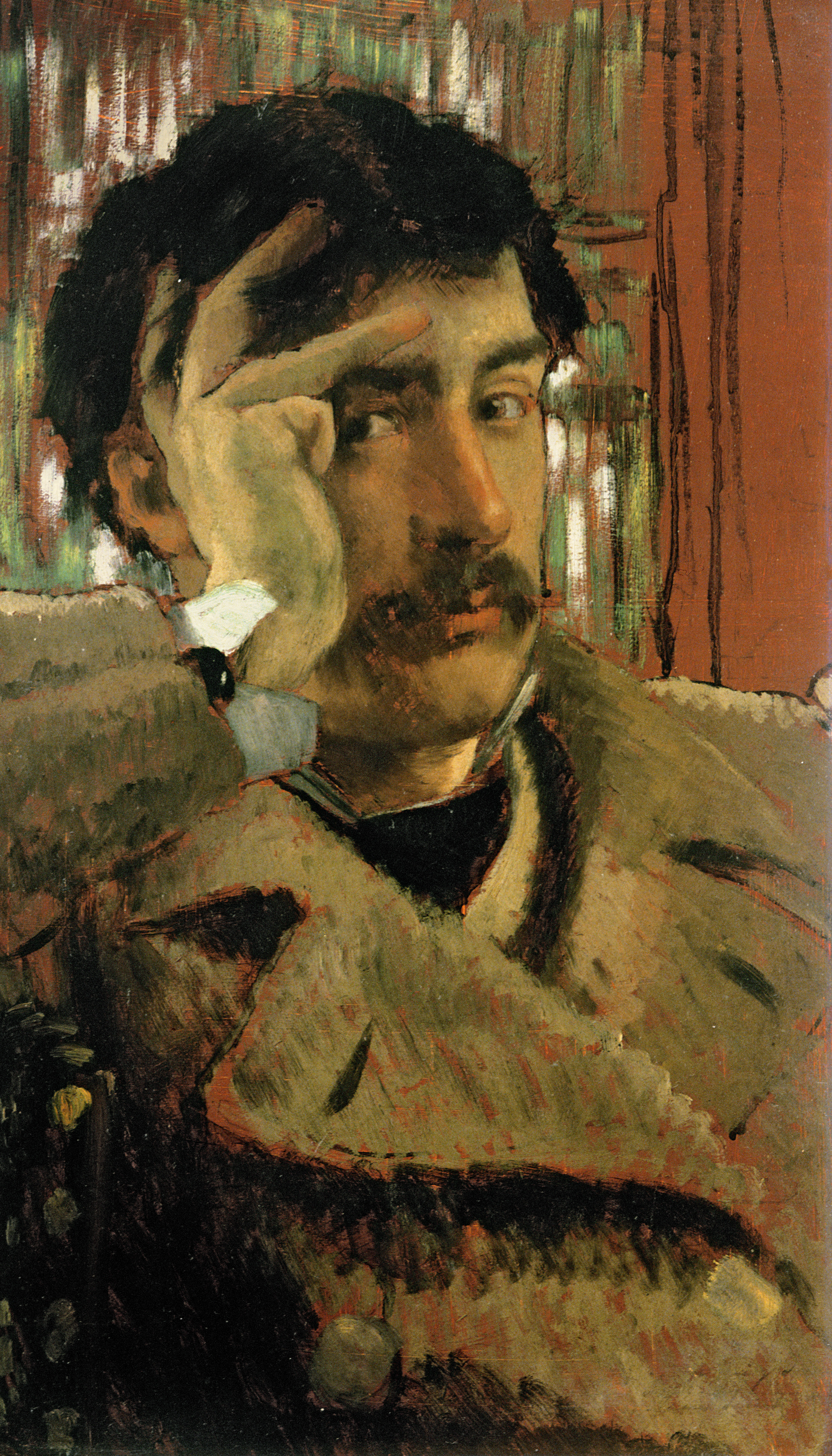What's most striking about this painting is the sharp contrast between the dark hues of the young woman's elegant attire and the brilliant tapestry of golden chestnut leaves in the background. The flowing pattern of the large leaves trailing from the trees is similarly echoed by the cascading ruffles of the woman's dress, which gives vibrancy to the painting. The woman's pose also grabs the viewer's attention. Leaning forward with her foot lifted, seemingly hurrying somewhere, she turns, possibly called by name, and gazes directly at the viewer.
The subject is Kathleen Newton, a young divorcee and the love of French artist, Jacques (James) Tissot. Tissot began painting contemporary scenes of fashionably dressed society women in Paris and continued this genre with much success when he moved to London in 1871 following the fall of the Paris Commune. He was invited by Degas to participate with the group of artists who became known as the Impressionists, but he declined. Like the Impressionists, he painted scenes of everyday life, but his paintings are very detailed and exacting. He was especially fascinated with femininity and all its accoutrements. Although derided by critics for depicting the nouveau riche, his portraits were in demand, and Tissot earned great wealth and himself became part of the upper class. Tissot met Newton when she was just 22. She became his muse, but theirs was a short-lived romance as she died at age 28 from consumption (tuberculosis).
Not long after Newton's death, Tissot had a spiritual awakening and focused the remainder of his artistic career on painting Biblical scenes. He embarked on two expeditions to the Holy Land to study the region and its people so that he could accurately portray the landscape, architecture, and costumes in his paintings. His series of 350 watercolor paintings depicting the life of Christ received much critical acclaim. Tissot was working on a series from the Old Testament when he died in 1902 at the age of 65.
~ Martina


 James Tissot
James Tissot